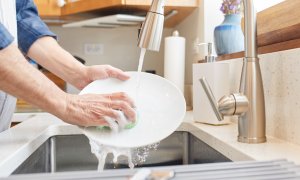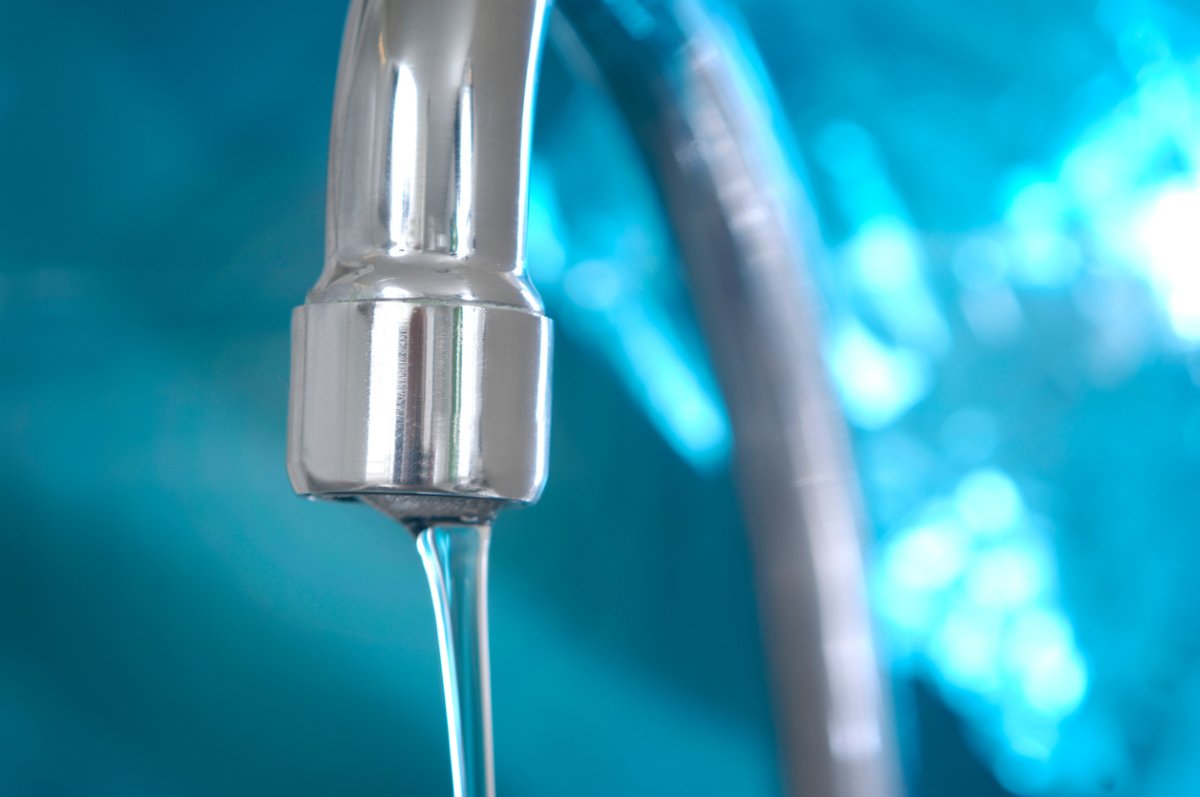

We may earn revenue from the products available on this page and participate in affiliate programs. Learn More ›
Low water pressure in the house can be a real annoyance—the shower subsides to a trickle, the washing machine takes eons to fill, and the dribble from the faucet can’t even manage to rinse leftover cereal from the breakfast bowl. If the oomph has gone out of your plumbing, there are several things you can try before calling in a pro.
Low Water Pressure in the Whole House
There is never a good time to discover that there’s a problem with your water pressure. Whether you’re about to jump in the shower, trying to cook dinner, or getting in that one last load of laundry before company comes over, not having water pressure can send you into a tailspin.
There are a lot of reasons why the water pressure in your entire house could be low, and some are totally out of your control. But don’t panic just yet. First, follow these tips to try to uncover the issue.
Talk to your neighbors.
The first step in fixing the problem is determining its cause. If you’ve recently purchased your home and it’s plagued with low water pressure, consult with neighbors to find out whether the issue affects the entire community. If it does, you can install a water pressure booster, which increases the pressure of water on its way from the main water line to your kitchen and bathroom fixtures. This is a relatively straightforward fix for ongoing low water pressure in showers.
If you’re experiencing an unusual or sudden drop in water pressure, it’s worth checking a neighborhood watch app to see if anyone else is complaining about a similar problem at that moment. If so, the pressure drop could be temporary.
Check the water pressure regulator.
In situations where your neighbors have good pressure but you don’t, the culprit may be a water pressure reducing valve. A previous owner may have had a regulator installed to limit the force of water diverted from the municipal supply line. If it turns out the water pressure reducing valve is causing your problem, call in a plumber to adjust the setting to allow for a higher flow rate.
If your system does not have a water pressure reducing valve, confirm that the main shut-off valve is open all the way. If it’s not, you can adjust it yourself without having to hire a plumber.
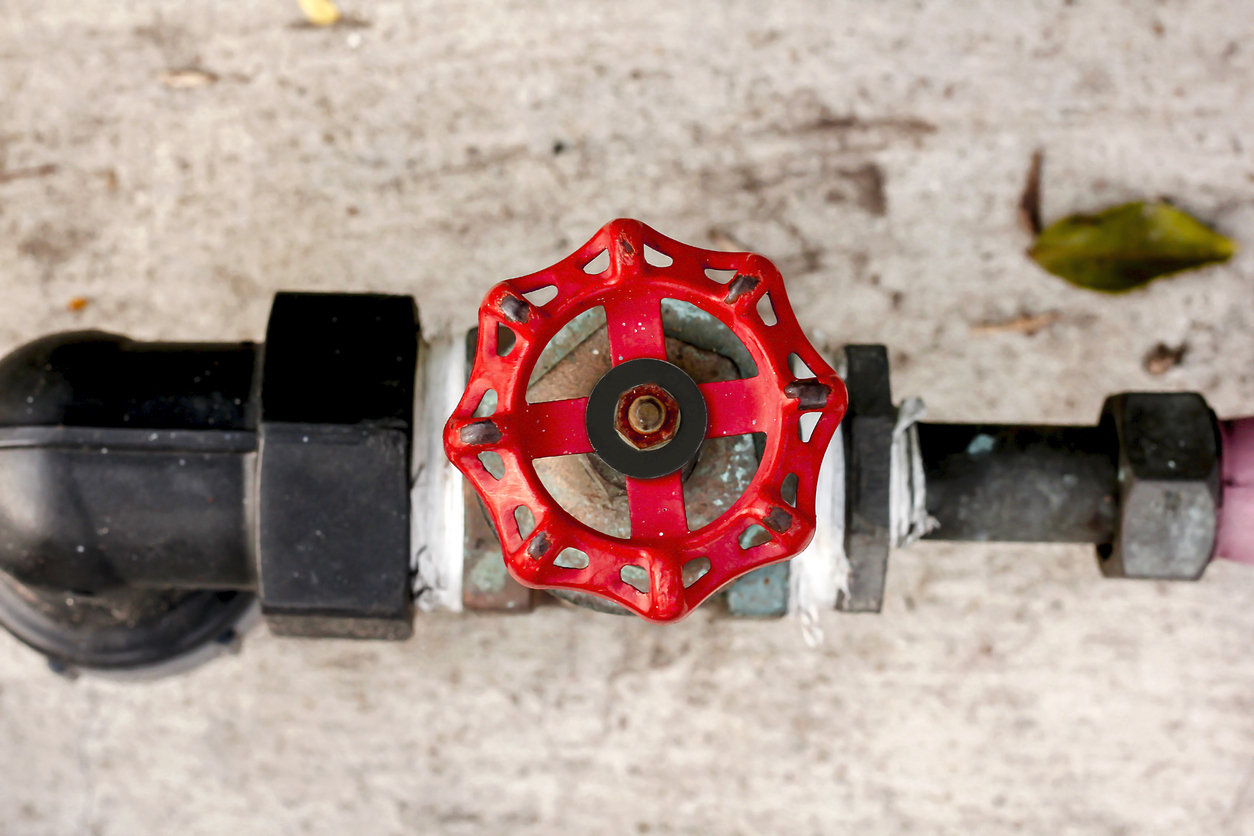
Check your water main.
Yet another possible cause of low water pressure is a leak in the main. Check your basement or garage where the main water supply enters the house for visual evidence of a leak, or head outdoors to inspect the ground where your main meets the local supply. Assuming the weather has been dry, a wet spot here suggests the need for professional assistance.
Inspect your plumbing.
If you’re still no closer to determining the cause of the low water pressure, you’ll need to take a closer look at your plumbing. It’s time to pull out your home’s mechanical drawings (if you’re lucky enough to have them) and examine them carefully. Are there valves you weren’t aware of? Does your supply line branch with the neighbor’s line? Issues like these could affect your water pressure.
Also, even if your pipes look fine on the outside, they could be cruddy and corroded inside. If you don’t know the age of your home’s pipes, your local building department may have this information. You may also want to look into the age of the water main as well as the line and valve leading to your house.
Call your water supplier.
Not all homes receive water from municipal sources. Some folks pay private companies to supply their homes with water. If you’re in that boat and your home’s water pressure is too low, you should call that private entity. Plenty of things can go wrong between the pump house or tower and your home. For instance, a test the company performed might have kicked up sediment between the distribution line under the street and your home, negatively affecting your water pressure.
No Water Pressure All of a Sudden
A sudden lack of water pressure could be caused by a few different issues. Generally speaking these issues have nothing to do with your home, but you should still understand the possible causes.
There could be a water main break.
If a water main breaks, whether the result of age, cold temperatures, or poorly performed street work, it will begin dumping water underground. The city may not be aware, so be sure to call.
The city may have shut down the supply for maintenance or construction.
Call the water department or check the city’s website to see if a notice was posted.
The city could be flushing hydrants.
Fire hydrants can freeze or fill with sludge, so cities typically flush them semi-annually to ensure they’re clear. This can cause serious, though temporary, water pressure issues in the houses down the line.
In any of these cases, the pressure loss will be temporary. But when the water does come back online, it will definitely kick up sediment, which can clog supply valves and faucet aerators. Be prepared to flush them if the pressure seems low when the water comes back on.
Fixture-Specific Low Water Pressure
In a home with otherwise adequate water pressure, it’s not uncommon for one or two fixtures to trickle weakly when they should powerfully cascade. Here’s what you can do when you notice water pressure trouble with your shower, sink, or toilet.
Low Water Pressure in the Shower
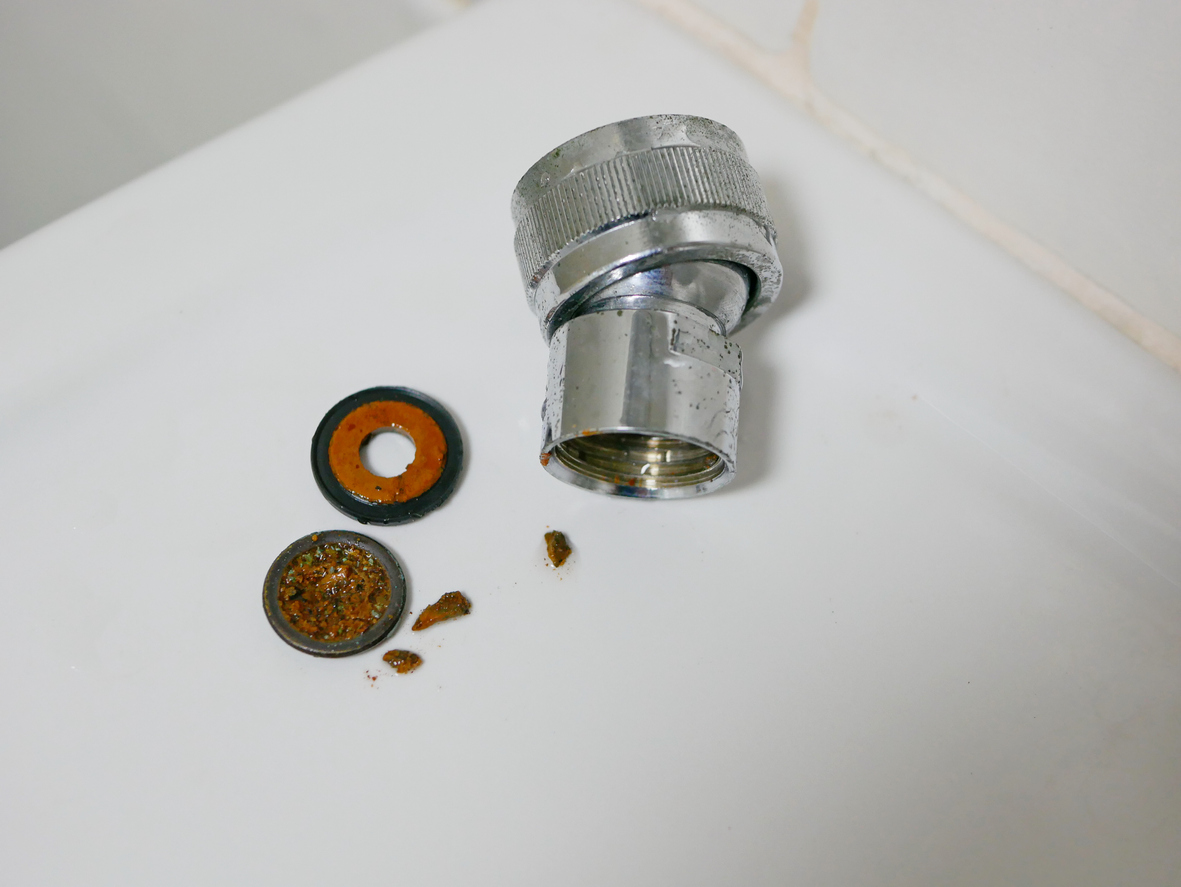
Unlike a toilet or faucet, shower heads have very small holes. Their size helps increase the pressure of the water flowing from them, reduces the amount of water used, and creates a pleasant, soothing stream. But these holes are prone to becoming clogged by small pieces of grit, sand, and sediment. When this happens, you have two options: Clean the shower head or replace it.
Some shower heads have tiny silicone or rubber nozzles that are very easy to clean. Simply rub a finger over the nozzle while the water is running to loosen the grit. Another option is to remove the shower head and soak it in vinegar. As an alternative, you can leave the shower head in place and tie a large bag filled with vinegar to it, making sure the shower head is fully submerged. Some scrubbing may be required for an extremely dirty shower head.
Replacing a shower head might be the best option, particularly if your home has water flow issues to begin with. The Kohler 72419-BL Awaken Showerhead, a top performer in our reviewed guide of the best high-pressure shower heads, features a pressure-boosting spray engine and provides three spray patterns, including intense, targeted, and wide coverage.
Low Water Pressure in the Sink
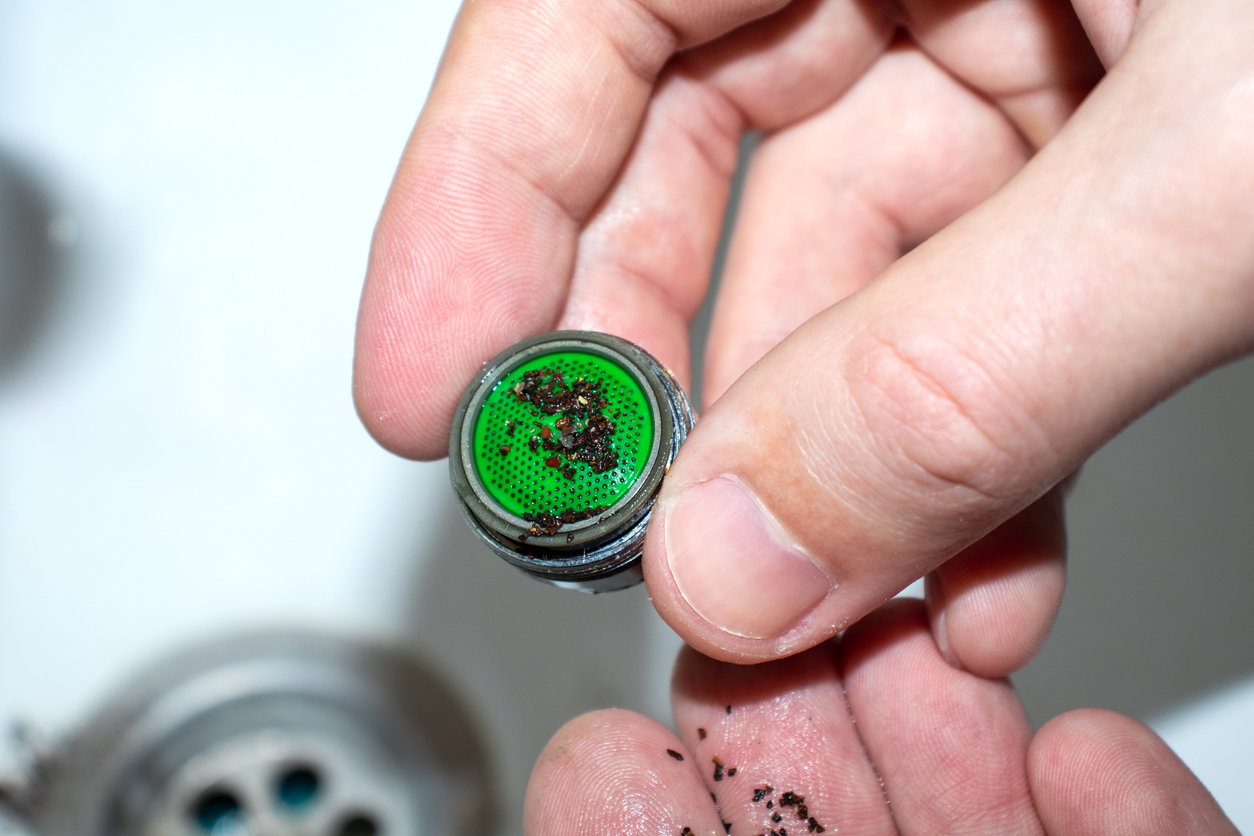
A poorly performing faucet is likely to have a clogged aerator. Unscrew the aerator and look for signs of grit or buildup. If the aerator needs to be cleaned, soak it in a vinegar-and-water solution. If that doesn’t work, buy a replacement aerator (they’re inexpensive).
While the aerator is off, turn on the faucet to be sure you’ve correctly diagnosed the issue. If low water pressure persists, the problem may not be the aerator after all but rather a clog in the line to the sink. Clogged lines are especially common in older homes with galvanized pipes, which are prone to develop mineral deposits. This is a problem best handled by a plumber.
Pro tip: If you have trouble getting the aerator off of an older faucet, try using a flexible rubber jar opener and a pair of water pump pliers, like these from Channellock, to get a grip and twist the aerator off without damaging the finish.
Low Water Pressure in the Toilet
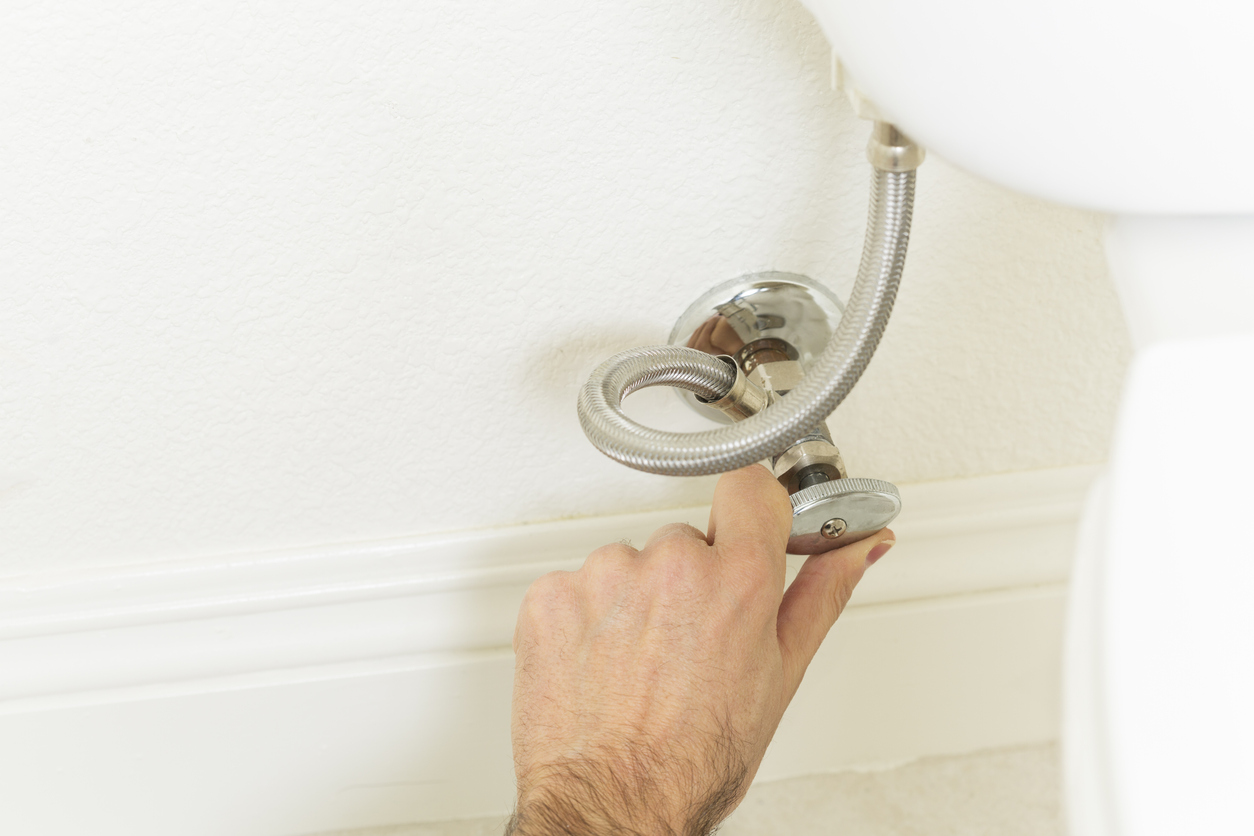
If your toilet’s water pressure seems low or it’s taking much longer to fill than it used to, it’s time to do some investigating.
First, make sure that the water supply valve that feeds the toilet is completely open. This valve is easily accessible and simple to check, so do this before examining the rest of the components.
Next, check the water fill valve inside the tank. This valve can become clogged with sediment and grit. At first, this grit can actually increase the water pressure while simultaneously restricting volume, creating a hissing sound. Over time, though, the grit can completely clog the supply. In most cases, it’s easier to buy a new toilet fill valve and replace it than it is to dig the grit out.
If the supply valve is open and the fill valve is working properly, there could be an issue with the supply hose. Shut off the water to the toilet, get a small bowl to catch any water, and remove the supply line with a pair of pump pliers. If the supply hose is the cause of your problem, grab a new one at the home center and replace it.
Temperature-Specific Low Water Pressure
Another common issue many homeowners face is temperature-specific low pressure, where only the hot or cold water supply is affected. This might be happening at only one faucet or shower, or throughout all of the fixtures in the home.
There are several reasons why a temperature-specific drop in water pressure might occur. Unfortunately, fixing some of these conditions can be expensive.
Low Hot Water Pressure / Normal Cold Water Pressure
If you experience low pressure only from the hot water outlets in your house, blame it on your water heater. First, make sure the shut-off valve to the tank is fully open. If it is, or if opening it completely doesn’t help matters, solving your water pressure problem might require professional help, and maybe a new water heater.
Water heaters don’t last long—just 8 to 12 years, on average. Over time, tank-style water heaters corrode and turn absolutely horrifying inside. The corrosion, rust, and sediment can clog the tank or lines, leading to low water pressure. It’s usually best to call a plumber to evaluate the appliance. If it turns out that you do need to replace your unit, this researched guide to the best water heaters is a good place to start.
Low Cold Water Pressure / Normal Hot Water Pressure
Low cold water pressure with normal hot water pressure is uncommon, but tracking down the issue isn’t difficult. Because the hot water pressure is fine, you know that the cold water must be working properly up to the point where the water supply branches off to the water heater. You’ll want to start looking beyond that point.
Check for closed water valves, open valves that should be closed (such as hose spigots), and other issues that might affect pressure. If a specific sink, shower, or appliance is involved, the problem probably has to do with the control valve or supply line that feeds the fixture.
Final Thoughts
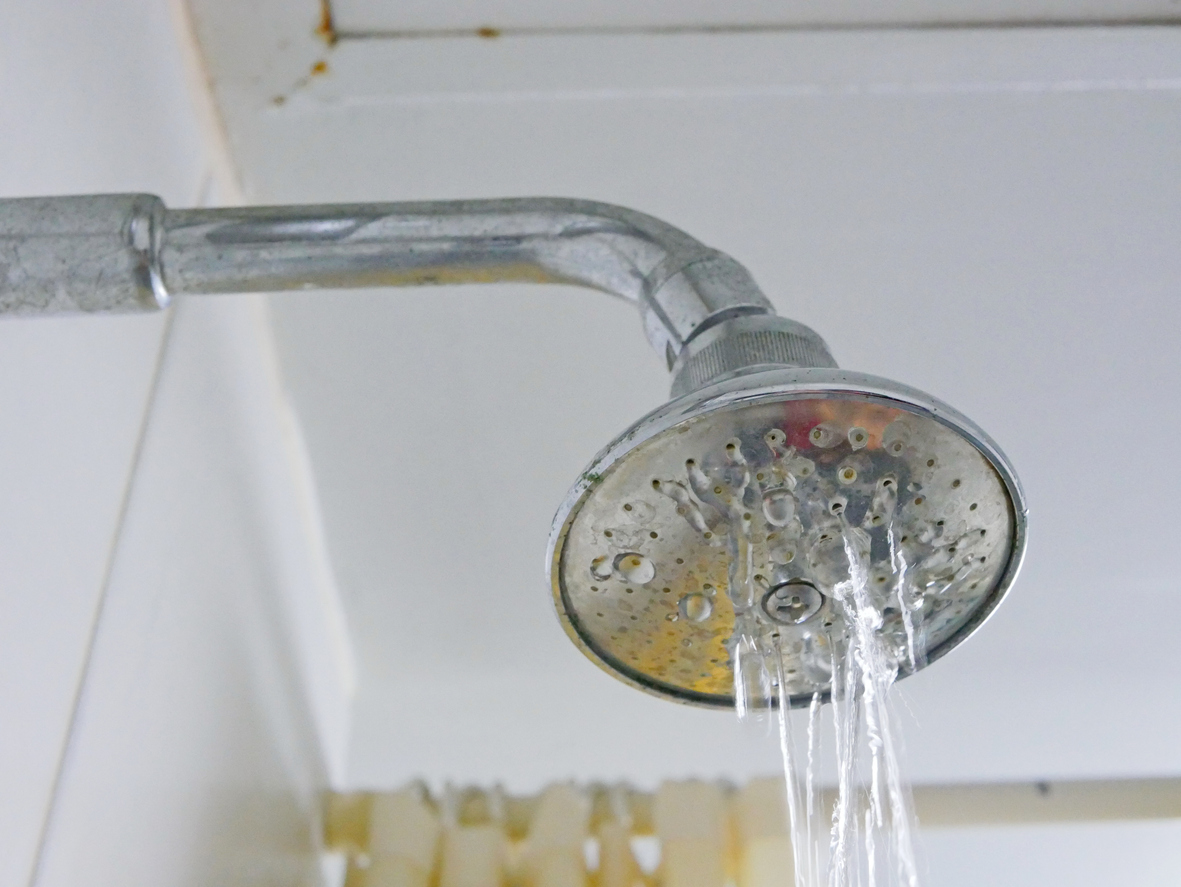
Low water pressure can be frustrating and concerning, and it’s easy to let it get the best of you. Whether it’s caused by a city issue, a problem with the plumbing inside your home, or a clogged fixture that needs replacing, not having water when you need it is a problem.
It’s important to keep your cool and put your brain (and tool box) to work so you can get to the bottom of the situation before it becomes too disruptive. If you work methodically through the steps outlined above, you should be able to determine the cause of the low water pressure and either correct the plumbing problem yourself or figure out which pros you should call to fix it for you.
FAQs About Having Low Water Pressure in the Home
If you’re still wondering about household water pressure and the reasons why it can suddenly drop, check below for answers to some of the most common questions about low water pressure.
The easiest way to measure the water pressure in a home is to install a water pressure gauge, such as Flow Doctor’s Water Pressure Gauge Kit, on the end of an outdoor spigot or other threaded outlet. Simply screw it on, open the valve, and check the pressure.
There are a lot of reasons why water pressure could suddenly drop. Water main breaks, planned maintenance, and routine tests on fire hydrants are some of the most common culprits.
The easiest way to increase the water pressure in the shower is to replace the shower head with a high-pressure model. These shower heads, which simply screw into place, increase the pressure without mechanical pumps or other devices.
If water pressure is low in only one area of the home, it could be an issue of volume. For instance, if the affected bathroom falls at the far end of the supply branch, someone turning on the water in another area of the home could “starve” the pipes for water. In these cases, it’s often a good idea to install pressure-sensitive booster pumps that can supplement the system.
This is probably also an issue of volume, and it’s likely not just low water pressure in the shower only, but throughout the house as well. When a toilet flushes, it draws cold water from the house’s plumbing to refill the tank. The water heater that supplies the shower with hot water draws in cold water as well and then heats it before sending it out into the home. Flushing the toilet can cause a temporary drop in the cold water pressure, which means that the pressure feeding the water heater (and in turn, the shower) would drop as well.
